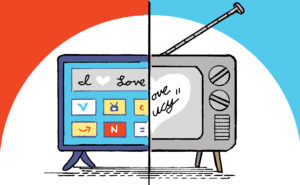 “The Sell Sider” is a column written by the sell side of the digital media community.
“The Sell Sider” is a column written by the sell side of the digital media community.
Today’s column is written by Peter Spande, chief revenue officer at Business Insider.
The advertising industry loves the term “premium.” Every supply-side platform (SSP) claims to possess the most premium publishers, while every media company will, when given the chance, describe their properties as “premium.” At the same time, buyers talk about how they’re rapidly ramping up purchases of premium inventory.
We use this as code and imbue the phrase with all sorts of meaning to denote a strong brand, scarce inventory, good design or minimal ads. But in reality, premium is nothing more than a description of price. If you pay $1 cost per mille (CPM) for one site and $6 CPM on another, the latter represents a premium, regardless of the site’s reputation or design.
This contrasts with the first wave of programmatic, which was an era of bargains. These bargains still strike fear in the hearts of publishers afraid of the ever-deteriorating CPM. They also rightfully excited direct-response advertisers of all shapes and sizes. Being a “premium site” was – and still is – the best way to command a higher price and differentiate your inventory from newer, less understood sites surfacing on the scene.
Buyers have come to realize that some bargains aren’t as great of a deal as they once thought. And so we enter a new era of programmatic buying, where buyers and sellers are getting more prescriptive about what will generate a premium.
No Longer A Bargain
There are two primary reasons why yesterday’s bargains aren’t always that great of a deal.
If it’s too good to be true, it probably is. Increasingly, the really amazing deals are less amazing than they first appear. Many bargains come with some sort of baggage, such as bots or other types of fraud, super-low viewability rates and content that is unacceptable to the advertiser. There are ways to separate the great deal from the undesirable inventory but each solution adds cost.
Second, lots of people want the same inventory, leading to lots of bidding in the RTB space, which drives up prices. That bid that used to clear a $1 CPM is now clearing at $2.50 to $7.50 or higher.
For media companies, this is good news. But those that have been using their legacy, size and reputation to claim a premium may face stiff headwinds. “Premium sites” must evolve and rework their strategies to prioritize and prove value over price.
Make It Truly ‘Premium’
I see a few ways sellers can create a premium for their inventory. They can start by developing a first-party data strategy that helps buyers understand what is unique about their site and audience. Value is created through understanding who the audience is and what they are doing. Truly unique data can provide a publisher’s best customers with the ability to dramatically increase their advertising effectiveness on their platform.
Publishers should avoid getting painted with the low-quality brush that plagues the sites formerly called “non-premium.” Stories of “premium” publishers with viewability ratings below 20% are shared in hushed voices at industry events. Less common, but still frequent, are stories of media companies being banned from exchanges for extremely high amounts of fraudulent traffic. In such cases, a publisher may have a well-respected brand but their inventory may be thrown out before any buyer has a chance to evaluate their legacy.
Does this mean there is no value in the brand created by the media company? Absolutely not. But it does mean that the “premium brand” will have difficulty collecting a premium if the inventory quality isn’t there.
Publishers also shouldn’t create ghettos for undesirable inventory. Some publishers only put their “non-premium” inventory on exchanges in an effort to protect their premium inventory for direct programs. As the RTB market becomes more mature and efficient, the “premium” will fade. And as the industry gets better at separating the wheat from the chaff, the ability to discard lower quality inventory on exchanges with premium pricing diminishes, too.
One person’s premium is another person’s waste. The good news is that media companies with valuable inventory are finding more ways to extract that value in open and private marketplaces of all types. The bad news for media companies: Extracting value for the “premiumness” of their brand will require more proof of value than ever before.
Follow Peter Spande (@PeteSpande), Business Insider (@businessinsider) and AdExchanger (@adexchanger) on Twitter.












